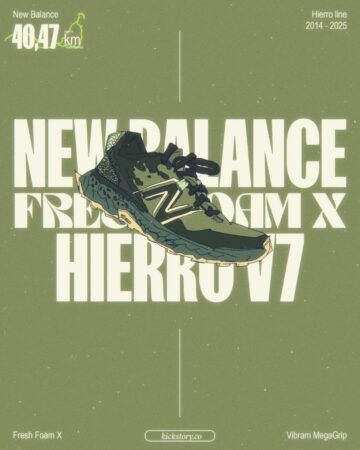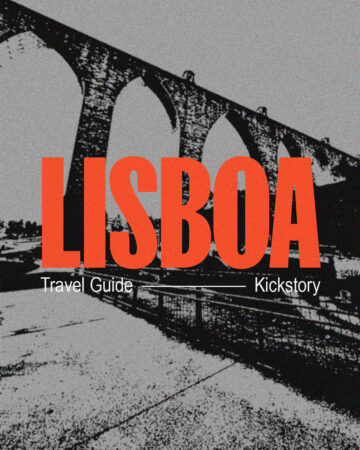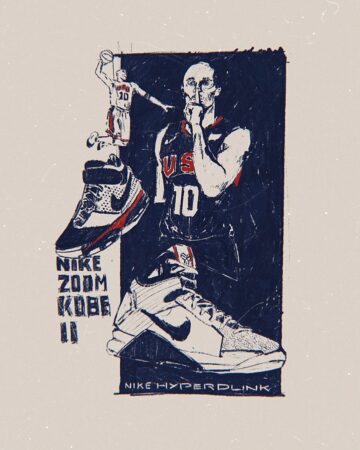
When we were planning our trip, the first person we got in contact with was designer Marc V Brosseau. We initially thought he would be in Boston, but he had already moved to L.A. (we will tell you all about that in his interview). So we asked him for suggestions of names of people in Boston and the first he brought up was: David Filar.
David was on board right away and we couldn’t have been more excited. Researching his background, we saw that he is not just a designer. He is an artist, a creative, a content creator and all around amazing human being who is always looking to be the best version of himself, and also helping people to be their best versions as well, creating dialogues everywhere he goes.
We met him in front of the Boston Public Library, a historic place in the city, to talk about the sneaker he developed with his friend Marc – the Reebok Zig Kinetica II Edge. David worked at Vibram for almost 8 years, a company that develops and licenses rubber soles, and this Zig was the first Reebok to have a Vibram sole developed specifically for it. Out of more than 1,000 projects that David has developed for them, this is one he holds very close to his heart. Two weeks before our interview, he moved from his role as creative director to head of product and design at End State – a startup founded by Stephanie and Bennett that bridges the gap between digital assets and physical products.

“My name is David Filar. I tell people that I am an artist, but I don’t believe I am one thing. I’m a footwear designer, a creative, a painter, a podcast host, a volunteer, I’m a lot of things. I try to do as many things as possible, so I can learn what I love to do and then what I don’t like to do. I’m a first-generation immigrant from Poland, so my family immigrated here and I always tell people every time I start an interview that I’m nothing without my parents and their sacrifice. So I’m super happy, blessed, fortunate, and thankful that I can sit here with you at this Starbucks cafe in Boston, instead of living in Poland on a farm. Also, I’m super thankful to be here, thanks for asking me to do this. I’m stoked (laughs).”
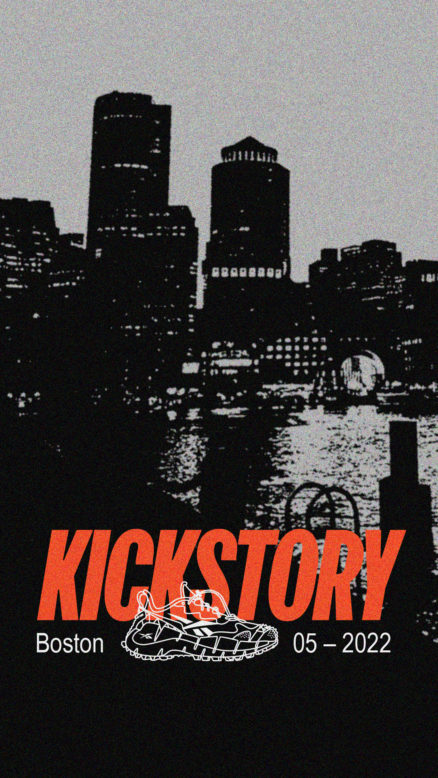


How do you think that being a first-generation immigrant in the US has shaped you as a person?
david It’s everything, right? I think the biggest thing my parents did was provide us with a better life, but it’s also they’ve instilled this work ethic in me from a very young age, “I just believe that you can do anything in life if you just work really hard towards it and you set your mind towards it.” And I think the sacrifices that my parents made and the work they had to do to get to where they are today has been remarkable. So I have grown to really embrace the work ethic and not define my life by work. It’s just balance. If you do what you enjoy doing, then you just could enjoy working at the same time as living. So for me, that’s really important.
My parents have worked a lot of shitty jobs over their lives, they’ve worked really hard. I remember when I was like 13, 14 years old, my mom used to clean funeral homes and rich people’s houses, just to make some money on the side as she was studying for her degree at the same time while raising three kids. So at night time, she would always ask us to help her clean these places for $10 to $15, she would pay us for a couple hours of work and we’d pick up trash and do these things. So from a very young age, I was always working because they taught me that if you really want anything, you just have to put your mind to it and work towards it.
“I have grown to really embrace the work ethic and not define my life by work. It’s just balance. If you do what you enjoy doing, then you just could enjoy working at the same time as living. So for me, that’s really important.”

And how did you get into the creative field?
david My sister is a year older than I am. She went to college at Emerson, which isn’t too far away from here, and in my senior year of high school I went to visit her here in Boston and I just fell in love with the city. I was like “I need to go to a college in Boston.” I only applied to one, which was Wentworth Institute of Technology.
I applied to be an architect as I always wanted to become one. But they denied my application as I didn’t have a portfolio, and that was one of the pre-requirements to get accepted. So they told me to pick a different major that they would accept me and I could always transfer majors into architecture. I know, it’s very strange. It’s like a backhanded compliment: you’re good enough for everything else except being an architect. So I started with a civil engineering degree and I fucking hated it. It was boring. There were classes on bricks and structures, it wasn’t for me.
In my freshman year, we had 13 guys in a suite, yes, it was way too many dudes in one place (laughs). And at the time, I had a roommate, Lorenzo, and he was always drawing with markers and stuff. He was the only person in industrial design, so I asked him what his degree was and he was like “yeah, I’m doing this design degree, I’m artistic.” – now he does photography (laughs). After I watched him do that I switched majors to industrial design, and I didn’t know that this degree existed before then. I never understood it and I never knew it was a career path to be a footwear designer until my junior year of college. At the time, I learned that you have to try all of these things to really learn what you love to do and meet new people to inspire you to do something else. I always try to reference him because he was the first person that introduced me to design as a degree.
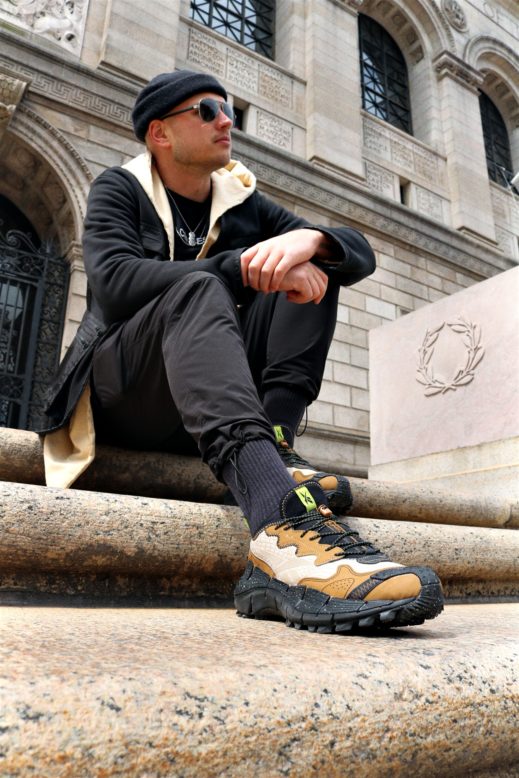
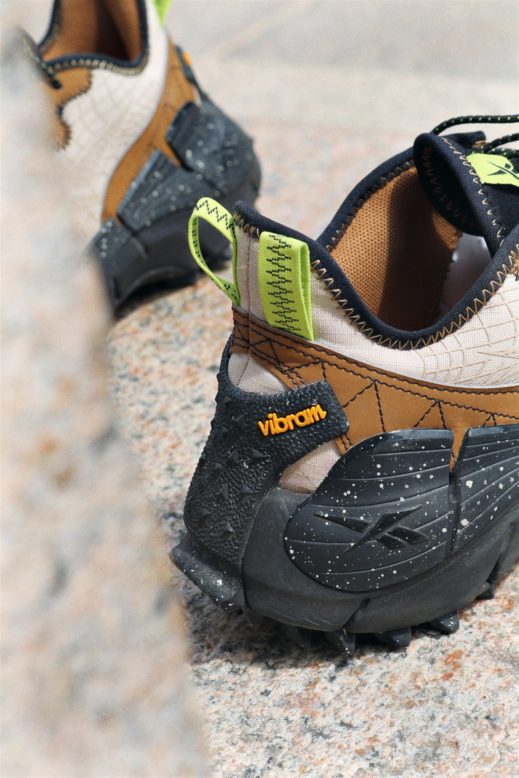
And once you found out about design, what drew you to footwear design specifically?
david Design is so obviously everything. It’s from designing the chairs that were sitting in, to your toothbrush, to a car, to footwear, it’s literally everything all around. I met a couple of people along the way that inspired me to do footwear design, and I took a footwear studio class in my junior year of college. That’s where I really learned the fundamentals of footwear design and I just really enjoyed it, that was my first entry point into footwear and really tried to set my career into it.
I also did my college thesis project kind of about it. I played tennis in college, and I loved it, so the project was around this insole that you insert into your shoes and it would track your movements and help you develop and become a better tennis player. It was around feet, anatomical movement, and things like that. But yeah, when I was wrapping up college, 3-4 months before I graduated, I was only applying for footwear. I was just obsessed with that at that point.

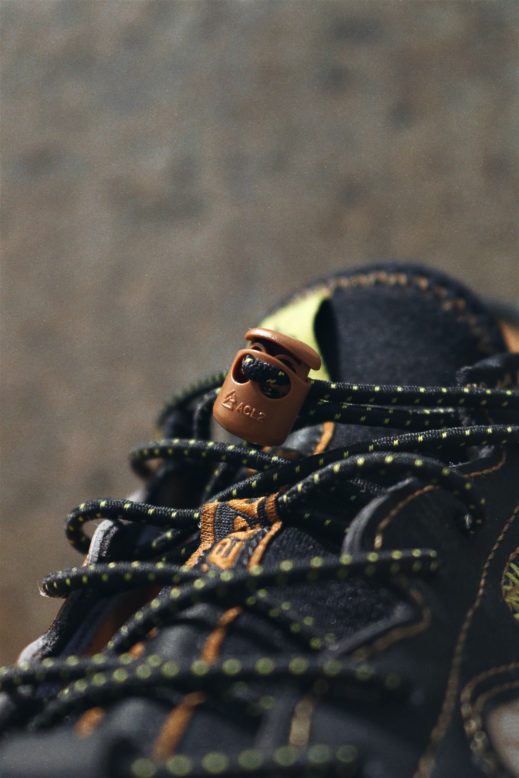
And what set off your interest in sneakers and footwear?
david When I was growing up we never had a lot of money. We weren’t like super poor, but my mom wouldn’t buy me shoes for more than $40. And it was like every four to six months until you beat your shoes to death and then you would get a new pair (laughs). But I remember in high school specifically, there was this streetwear kind of website called Karmaloop. They had all these weird brands on there, anything from watches to backpacks, to branded T-shirts. I remember buying my sneakers there but I picked the ones that looked so unlike anything else, and they were cheap. The branding wasn’t visible, I didn’t even care about the brand, they were just so unique and that’s what I gravitated towards. I still, to this day, have never owned a pair of Jordans (laughs). Because it doesn’t resonate with me, you know? I always like wearing something that is more unique and that’ll make me stand out in a different way.
“I remember buying my sneakers there but I picked the ones that looked so unlike anything else, and they were cheap. The branding wasn’t visible, I didn’t even care about the brand, they were just so unique and that’s what I gravitated towards. I still, to this day, have never owned a pair of Jordans (laughs). Because it doesn’t resonate with me, you know? I always like wearing something that is more unique and that’ll make me stand out in a different way.”


It's funny you say that because the reason why people are buying Jordans today is to stand out, but like, everybody has Jordans so they don't stand out at all, it's crazy. So, now that you work in the sneaker industry, do you think your relationship with sneakers has changed?
david I definitely pay more attention to brands now, but I still like to buy sneakers that are very unique and that you won’t see anybody else walking around with. If I enter an event, or a room, or a business meeting, I want to make sure that I’m the only person wearing that pair of shoes. And that’s why my collection doesn’t feature a lot of hyped sneaker releases because I just don’t resonate with it. How many colorways of a Stan Smith can you own? Or of an Air Force 1? That stuff is boring to me (laughs). So no, it hasn’t changed too much. But I’m just more in tune, I guess, with what brands are doing and what inspires me.
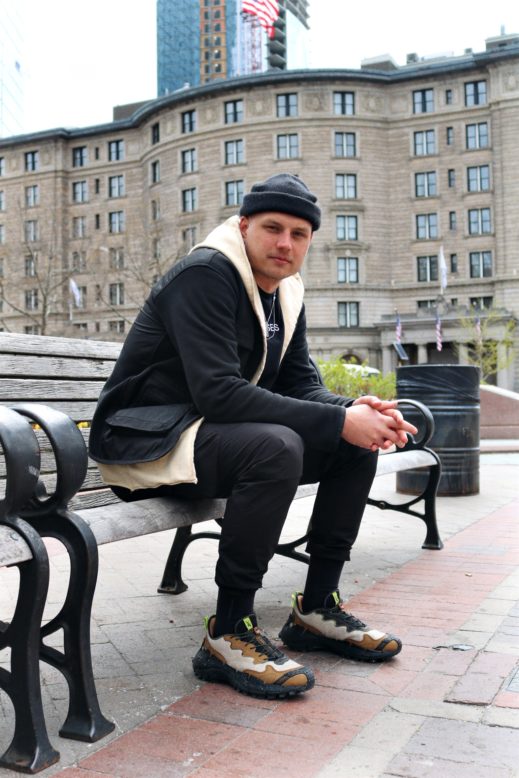

So what brands are you really into these days?
david Over the years I’ve been funneled through the Concept Kicks website. Daniel Bailey is a good friend of mine and over the years he’d share all these smaller independent brands, and I would learn about them. Here in the United States, there are so many of them like Clear Weather or Brandblack, both based in LA. One of my favorites is Lilith, which is run by Sarah Sukumaran, in New York City, and it’s this woman’s focused sneaker brand and they built out these incredible smaller silhouettes that are so unlike anything else that you’ve ever seen. And I’m happy that she sent me a pair in a men’s size. They’re just so unique! You walk into a room and it’s like “what the fuck is that person wearing?” And that’s what I love. So I’m really into smaller independent brands, I think they’re trying to do something completely different than what the mass production and over saturation of the sneaker market is. So I will most likely support those brands if the story is interesting to me.
“Over the years I’ve been funneled through the Concept Kicks website. Daniel Bailey is a good friend of mine and over the years he’d share all these smaller independent brands, and I would learn about them. Here in the United States, there are so many of them like Clear Weather or Brandblack, both based in LA. One of my favorites is Lilith, which is run by Sarah Sukumaran, in New York City”

Now, you have worked for more than seven years at Vibram. How did you get into the company?
david Yeah, so I just actually resigned from my position as design Creative Director at Vibram, after almost eight years. But the story is, I was graduating from college and I wanted to work in footwear, so I applied to over 100 different brands to try to work for apprenticeships, internships, or anything, and only two brands reached back out. One was a women’s heel brand. And the other one was Vibram and I loved it. I didn’t know too much about the brand before I started working there, but I knew they were more outdoor-based and active, they created performance products. And that was always super interesting to me, I felt it had a purpose, I wanted to make sure I was designing something that could affect people.
After four or five interviews I was fortunate to get the job. I started on a contract because they hired 2 designers at the same time, but they only had one position open. So mine started as a contract just to see how I do because I had no experience beforehand, they were taking a shot in the dark on a kid out of college, right? And so literally three months into that contract they were like, “OK, fuck it, you’re on board”. I remember those early days when I would walk into the office and I would pinch myself. And still when I think about that memory of me sitting at my desk drawing, doing overlays on translucent paper, and just sketching. I remember the feeling as a kid like “man I’m creating something from scratch every day.” That’s such a beautiful feeling.
And honestly, back then I wasn’t making a lot of money as it was my first job out of college (laughs), but I was so fucking happy to do something that was creative and in footwear. And over my time at Vibram, I had the opportunity to grow with the company. In eight years I went from designer to product manager, to design and development manager, to the creative director at the end of my career there. It takes a really amazing brand to follow an employee’s journey with how fast they grow, and so I’m super thankful for my experience there. I’ve been able to work on over 1,000 different projects, we’ve done a lot of cool stuff over the years.
“I remember those early days when I would walk into the office and I would pinch myself. And still when I think about that memory of me sitting at my desk drawing, doing overlays on translucent paper, and just sketching. I remember the feeling as a kid like “man I’m creating something from scratch every day.””


These days, are you more into sitting down and sketching or managing people?
david Actually, I love it all. I think my career has developed into managing people, directing, and doing more than just design – and I love design at my core. But if I was just a designer for my entire 8 hours a day I think I’d get bored of it. I like learning, trying new things, growing; or telling a story through social media and creating content generation as you guys do. I love touching all the different aspects of footwear.
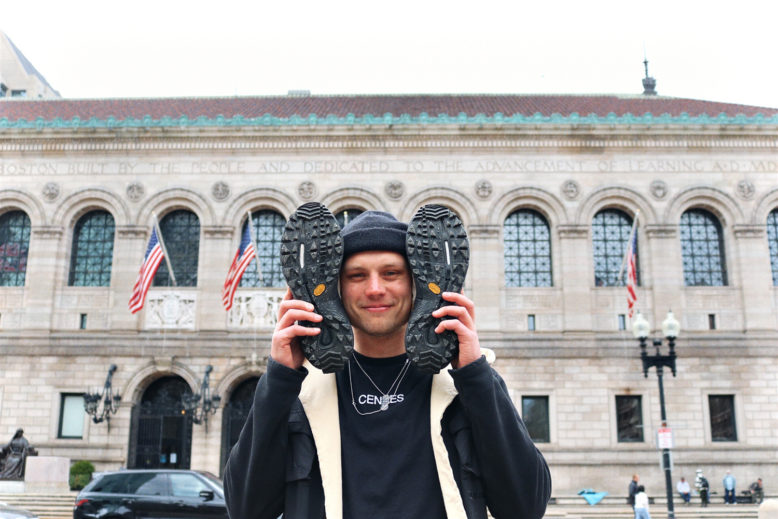
And why, out of all the 1,000 projects you worked on, did you choose to talk about the Reebok Zig Kinetica II Edge for your Kickistory interview?
david I chose this one because Marc Brosseau, who’s amazing, brought my name up to you both, so I’m super thankful for that. At the Complex Con 2018 in Long Beach, one night me and Marc were sitting poolside after the show, drinking, just hanging out, brainstorming, and talking with a bunch of our footwear friends and he’s like “David, we got to work together, I’m going to make Reebok use Vibram”. He was just a designer at the time and I wasn’t that high up the chain either. It was just an idea of trying to work together with your friends, and Reebok never did an exclusive outsole with Vibram beforehand, they only purchased our other types of styles which are open to many brands.
He was able to push a design brief internally in Reebok and that allowed us to partner with them for the first time, which was really beautiful to be able to move mountains like that. It proved how strong of an idea and a brain Marc has. We were able to sit down with the Reebok and Vibram team, and we drew and presented the concepts together. I remember we were in our Boston office together, we had the first blueprint printed out and we were literally marking it up, drawing together on it, and just collaborating with all the different details that you photographed for the interview. We were very tactical about what the placement was and what kind of story we were telling throughout the outsole.
And Reebok was great, they gave us full freedom like “you guys are the experts at the soles, you design it from scratch”. Marc sent us a rough sketch and he was like “I like this movement and feel, and then you guys come up with the ideas.” So him allowing us the freedom to create was beautiful and I tell everybody: working with your friends is the best kind of work you can do. That’s why the product at the end of the day stands on its own two feet within Reeboks walls. It’s so different from anything else that they’ve ever done.
If you read the Hypebeast and Highsnobiety articles, that’s why there are so many polarizing opinions because people didn’t know where it lived. They were like “oh, this is kind of like this…or no, this is so unique” and when you have multiple opinions about the same project, I think that’s when you win. That’s when you did something new because people don’t know what to relate it to. They want to say it’s like this, but they don’t really know because it’s so fucked up and different (laughs).
“When you have multiple opinions about the same project, I think that’s when you win. That’s when you did something new because people don’t know what to relate it to.”
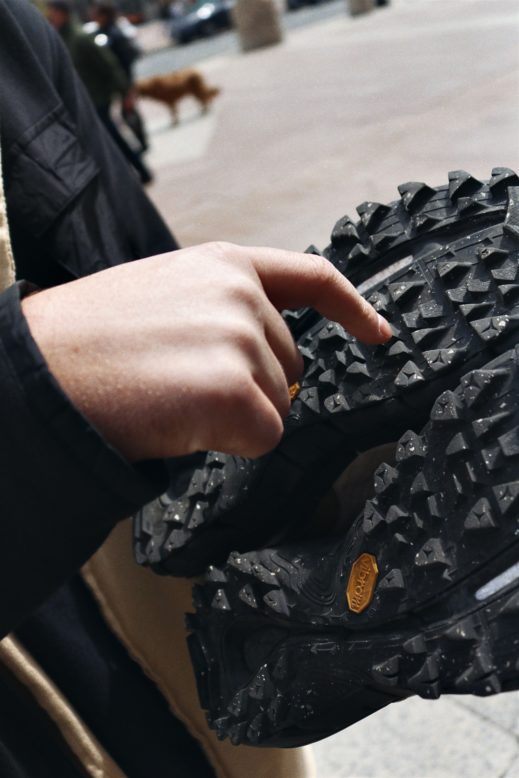

This shoe is so amazing and full of details, different from everything that's out there. What was the message behind the design and what story did you want to tell with the product?
david It was about the Zig as a franchise within Reebok, but it was to elevate this lifestyle product to be more technical, performance-oriented, and trail-inspired. I think a lot of brands do that now with storytelling where you can’t just sell a normal type of product, it needs to be multi-multiverse or be able to do many things for the consumer.
So, with the Zig Edge, if the consumer wants to walk down the streets of Boston or New York but also go on a trail, they can have a multipurpose product. We wanted to have all of these technical features. So there’s a version of it with Gore-tex; there’s obviously the version with the Vibram outsole for durability and traction. That’s why you have the wrap-up rubber in the heel and toe for stability; there are all of these really thoughtful features.
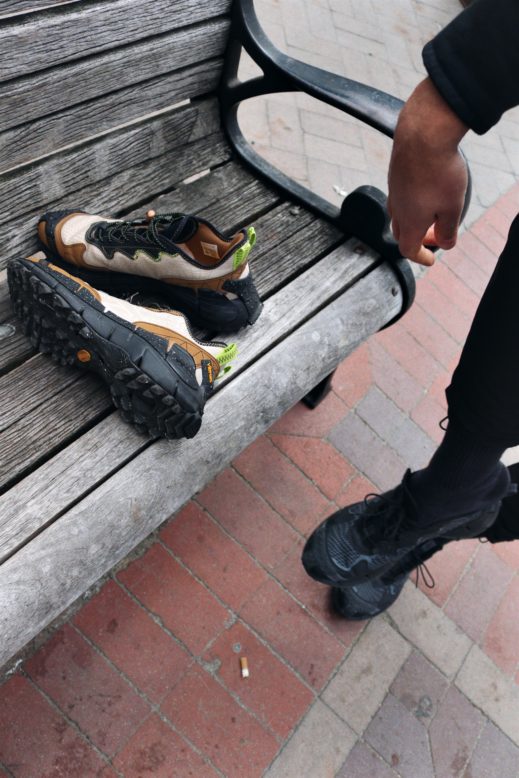
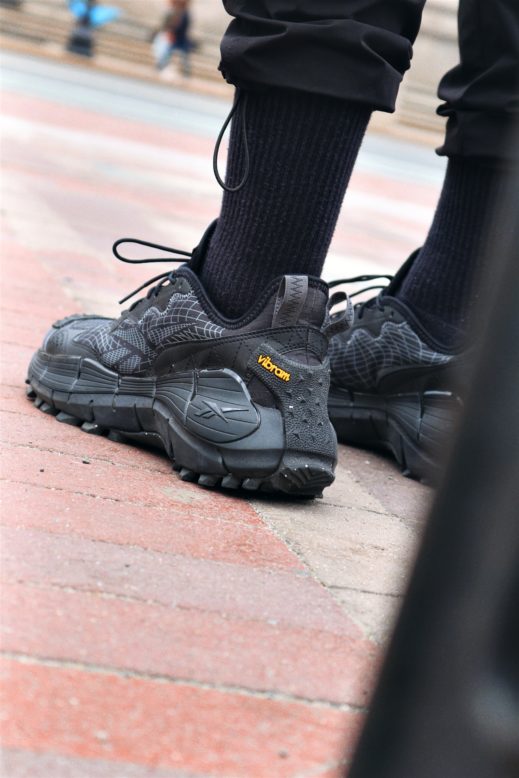
When you started working on the product, did you already know what the original Zig Kinetica II looked like?
david Marc sent us initial sketches of where he was going with the upper. So yeah, we had a feel and a vibe of it for sure. Not like how it looks in the photos today, right? The design process is always so fun because, in the initial raw sketches, you can see the foundation, it’s like a building – the grid lines are the foundation of it. But you don’t see all the details and the beauty that went into it at the end.

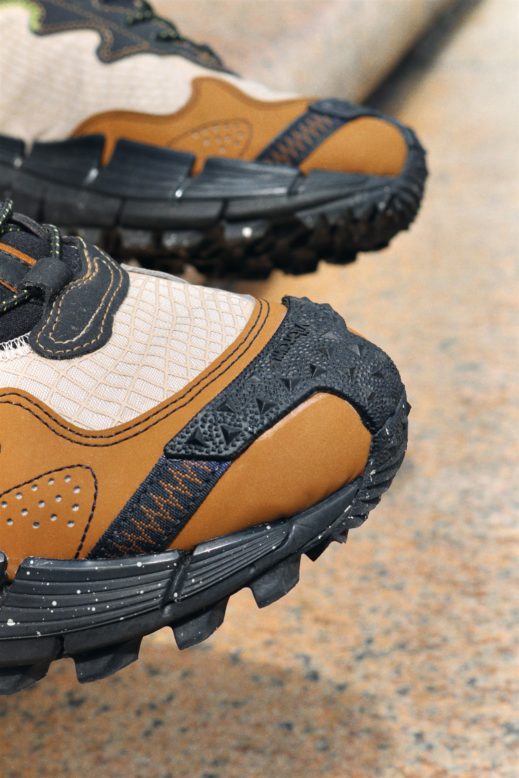
We can clearly see the collaboration between you and Marc on the product itself. He did the sneaker and you did the outsole, but there are some parts of the outsole that go up to the upper, it's really amazing work.
david Marc and his team were amazing because they wanted to make it feel that way, intentional. Not all of them, but some brands use Vibram just for the compound of the rubber, the logo, and the brand itself. But what I loved about this collaboration was that every detail was thoughtful and collaborative. Marc would send me something and say “Hey, what do you think of this idea?” and I’ll say “yes, let’s do that and tweek it this way”, so when you see all the details in the final product you know it was thoughtful. The way the toe piece is wrapping and it connects with the zig zag stitch along the toe box, it’s intended to be thoughtful.
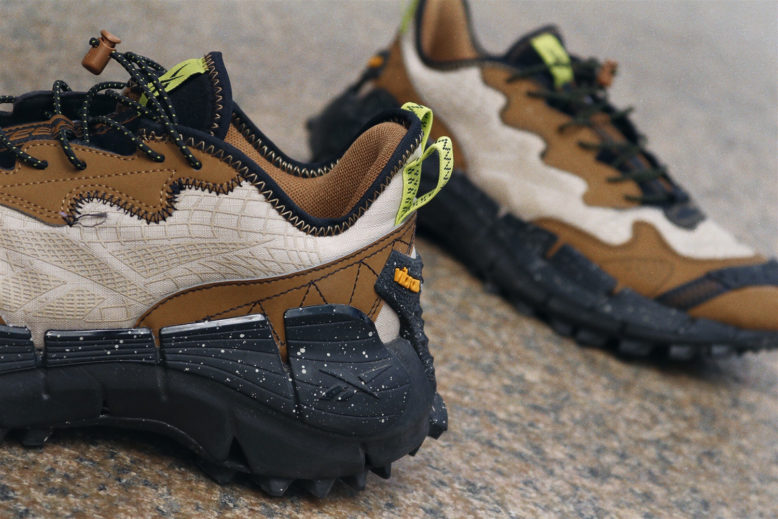
“I had this opportunity to work with a new startup here in Massachusetts called End State, which is a company that bridges the gap of digital assets with physical products. So while the project might start as an NFT to be built for the metaverse, there’s always going to be a physical component. They’re making the shoes fully in the United States – which is such an important story for me to be part of and grow – and they still use Vibram products, so I didn’t go too far away.”
And now you have just started a new job at End State. Tell us more about the company and the challenges you have there.
david The timing of this interview is interesting because literally, two weeks ago, I no longer work at Vibram, but I still chose a Vibram product because it’s close to my heart. But I had this opportunity to work with a new startup here in Massachusetts called End State, which is a company that bridges the gap of digital assets with physical products. So while the project might start as an NFT to be built for the metaverse, there’s always going to be a physical component. They’re making the shoes fully in the United States – which is such an important story for me to be part of and grow – and they still use Vibram products, so I didn’t go too far away.
I really love the two co-founders, Stephanie and Bennett, I think they’re rockstars. If I could be part of their story in building a brand from the ground up, that’s a legacy that I want to be part of. You know, being able to join a brand as the 5th employee – so think about potentially being able to grow a brand the size of Nike and being the 5th employee, how many times in your life do you have that opportunity? I love Vibram, it was an interesting time. I love the product, the brand, and the people there, but for my career and my growth and to be part of history, I was like “this feels right.”
My biggest fear in life is to become obsolete or to become irrelevant. So brands that don’t adopt or adapt themselves to new current times really freaks me out and I want to always be at the tip of the spear in terms of learning new things, adjusting, and understanding where people’s attention is going. When I see so many people talking about the Metaverse, NFTs, how much it scares them and they don’t know what it’s about; then you see there’s a ton of money involved, a ton of confusion, and obviously a lot of polarizing feelings – I love it, I want to be at the beginning of it. So, when there’s an opportunity to combine my passions of footwear, but also be the leader or collaborator in the space, that’s super exciting. Even if NFT fails in a couple of years and nobody cares about them, at least I fucking tried something new. I think that’s so important for, not only creatives, but everybody in their life to take a chance and learn something new.
“So, when there’s an opportunity to combine my passions of footwear, but also be the leader or collaborator in the space, that’s super exciting. Even if NFT fails in a couple of years and nobody cares about them, at least I fucking tried something new. I think that’s so important for, not only creatives, but everybody in their life to take a chance and learn something new.”
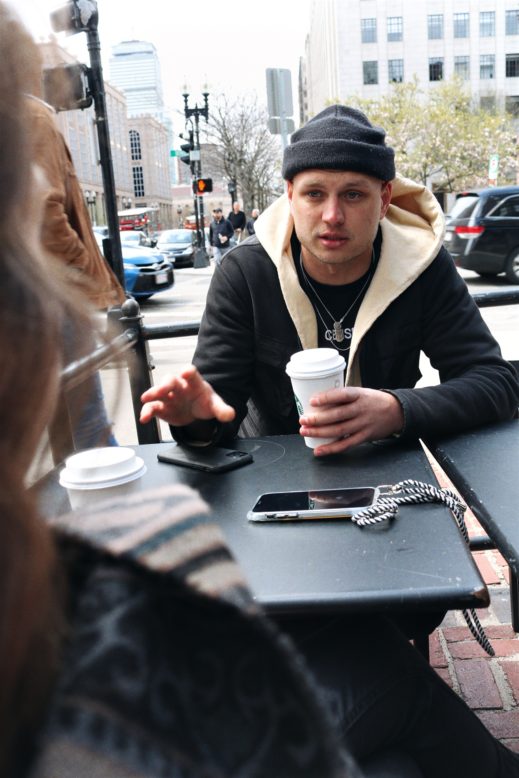
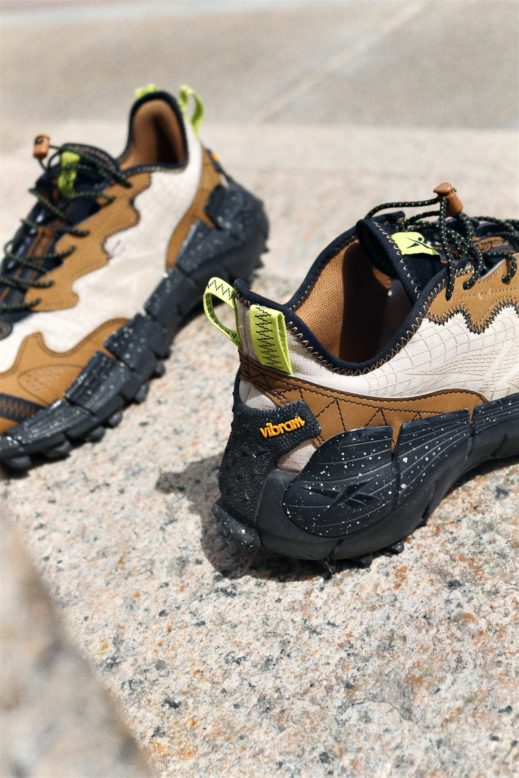
The process of fabricating footwear can usually take up to several months. So how do you guys in End State provide a physical product and manage customer excitement?
david We’re sitting here in the middle of April and towards the end of this month, End State will complete one year. They developed all their branding, the infrastructure of the product, the design, the development, the physical sneakers, and so literally they didn’t have the footwear design until like the end of last summer. Within six to nine months, they made and manufactured the shoes. We are able to move at such a fast pace that other bigger brands are not able to do. And that’s also really exciting because I can move as fast as possible to make sure that we meet what people’s needs are at that moment and we don’t lose time over that. So yeah, the NFT will get released first, but after 2-4 months we give people a shoe in their hands.
You also have this amazing project, An Untold Narrative, where you have conversations with creatives. Where did the idea to create that space come from?
david The purpose of it was to share underground creative stories. So people who don’t have thousands of followers, or don’t have a blue checkmark, or maybe are introverted and they don’t have a huge social presence because it makes them uncomfortable, but they’re amazing creatives. And I’ve been really fortunate throughout my career to meet a ton of people, so I had this backlog of amazing friends, family and industry colleagues that I just wanted to start telling people’s stories. My first episode launched in April of 2020, right when the pandemic started. I interviewed this kid who just graduated college, Shane Leonard, and he was a Boston College football player. He has a marketing degree but he changed into a fine art painter, and now he’s a full-time painter. Like, what an amazing story! He was my first. The episode is raw, I didn’t know what I was doing back then. But since then, I’ve interviewed painters, photographers, videographers, obviously footwear designers, art directors, and anybody. It’s about giving somebody a chance to share their story, who’s doing really cool things.
It’s really important to me and also, let’s be honest it’s partially selfish, they keep me on my toes and I learn something new from every one of my guests. It’s similar to what Kickstory does, I’m sure you learn from other people. That’s why I love talking to new people and I’ve interviewed people I’ve never met, never even seen before, and that’s the fun part of it.

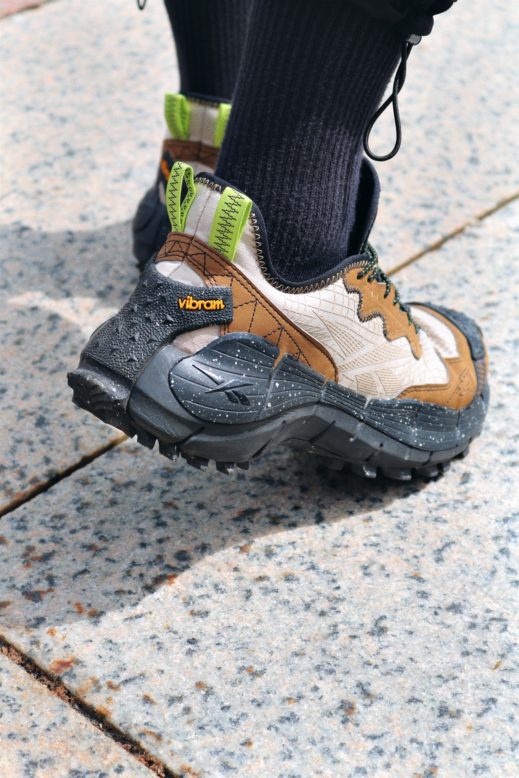
You also make these amazing sneaker-themed super realistic oil paintings. What are you working on at the moment?
david Yeah, I started with acrylic and now I do primarily oil. Now I’m working on an acrylic piece of the new HOKA by Bodega collaboration that came out. Shout out, Drew White, who works at Bodega, he gifted me a pair of these so I wanted to do this beautiful painting. I don’t think I’m gonna sell it or anything. Maybe I’ll just give it to them. And it’s just fun, right? You gifted me some sneakers so I’ll give you a painting (laughs).
I don’t think I’d be as creative in footwear if I didn’t have other creative outlets. And people who do one thing all the time, I would get burnt out faster. They are not as creative. They draw the same shit over and over. I want to make sure that I’m always fresh (laughs). I paint on the side and I’ll do commissions from time to time. People tell me like “are you ever gonna go art full time?” Probably not because I think it’ll take away from my creativity and my love for it. I pay a studio fee every month and then I don’t sell a painting every month…I probably lose money on my art (laughs).
Do you have anything you would like to say to any aspiring creatives out there?
david Figure out what makes you super excited to just wake up in the morning and do that. Because I’m very fortunate and blessed to even be featured in this interview and I’m happy that I found what gets me up in the morning and makes me super fucking excited to do what I like to do. And I fear that so many people around the globe don’t do that. And you know, with the Internet, we have such an opportunity to figure out what that is, because it’s free access. You have no excuse to not figure it out because you can Google something, you can take a video of yourself and go viral, you can go to “YouTube University”, there’re so many options. I would just tell people to try to figure out what they really love to do and if they haven’t figured that out yet, you got to try more shit (laughs).
Reebok Zig Kinetica II Edge
Owner: David Filar
Year: 2021
Photos: Kickstory
